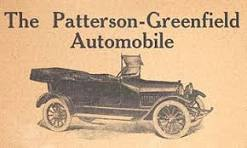Patterson & Sons’ history is a remarkable one. That the only Black-owned automaker, founded by a former slave, found success in a malicious culture for three generations is a phenomenal feat. Remember this was an era defined by virulent racism, from President Woodrow Wilson’s segregation of federal workplaces to the popular acclaim of D.W. Griffith’s “Birth of a Nation.” That resilient Nubian chromosome led to Charles Richard Patterson and his son Frederick being inducted into the Automotive Hall of Fame in 2021.
Charles was born a slave in Virginia in 1833, and by 1850 he had escaped to Greenfield, Ohio, a town with abolitionist leanings and a stop on the Underground Railroad. He learned the skills of the blacksmith and found work in the carriage-making trade. His talent elevated him to shop foreman, leading an integrated workforce. His reputation earned him a partnership with J.P. Lowe in 1873. forming J.P. Lowe and Company. Fortuitously for Charles the economic “Panic of 1893” caused his partner to sell the company to him.
The Smithsonian Magazine archived, “At first, the company offered repair and restoration services for the ‘horseless carriages’ that were beginning to proliferate on the streets of Greenfield. No doubt this gave workers the opportunity to gain some hands-on knowledge…” By 1915 this expertise paved the way for launching the Patterson-Greenfield automobile. The name “Greenfield” was a homage to the oasis he found in Ohio.
When Charles died in 1910, the business passed to his son Frederick, who was already something of a pioneer. He was the first black athlete to play football for Ohio State University. Frederick told Baltimore’s Afro-American newspaper his plan, “…was to build a car that could travel farther on a gallon of gas than any car being manufactured at the time.” The initial hope and optimism were defeated by the economic headwinds from Henry Ford’s behemoth “Model T.” and the creation of the moving assembly line. The other economic headwind was the onset of World War I, the increasing costs of raw materials, and the fact that the company was Black-owned prevented them from obtaining new financing.
By 1919 Frederick shuttered the car business and shifted to producing the bodies for buses, hearses and delivery trucks.The company thrived until Frederick’s death in 1932. Sadly in 1939, the company closed for good.
